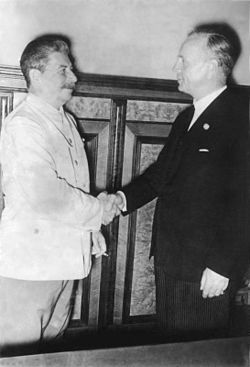Wandering around Penzance Cemetery looking for the graves of three Luftwaffe bomber crew members, I soon found the War Graves Section of the cemetery.
Of the 110 identified casualties, two stood out from the rest for very different reasons. The first is a war grave of an extremely strange and unusual political background, coupled with a puzzling discrepancy over dates.
According to his grave, Sapper William Ormerod (1903548) of the 661st General Construction Company of the Royal Engineers died on June 17th 1941.
William was born in Manchester and had lived in London. As Sapper Ormerod, he was a British Volunteer in the Winter War of 1939-1940 and was killed in action fighting against the Soviet Red Army in Finland.
Sapper Ormerod was initially buried in Karelia, but at some point his remains were returned to England. This lengthy delay is presumably the reason that the date of death on his grave in Penzance is listed as June 17th 1941, when there is much evidence to support the idea that he was actually killed in the previous year. But neither is a death date of June 17th 1940 particularly likely either, given that the Winter War ended with the Peace of Moscow, a treaty which was signed on March 12th 1940. Perhaps Sapper Ormerod was initially injured in combat, and then died of his wounds.
The Soviet Union, of course, were our allies for the vast majority of the Second World War. Before Hitler’s surprise attack on Russia, however, the Soviets, having signed a non-aggression pact with Nazi Germany in August 1939, the so-called Molotov–Ribbentrop Pact, were considered by the British to be an ally of Nazi Germany.
For this reason, when the Soviets attacked Finland on November 30th 1939, the gallant Finns were considered to be our allies. Presumably, this was the reason that men such as Sapper William Ormerod went out there to fight and in some cases, to make the supreme sacrifice. The great ironies of war were re-established, of course on June 22nd 1941, Operation Barbarossa, when Hitler attacked his erstwhile ally. The Soviet Union then immediately ceased to be a bunch of Commies and became our true and most wonderful of friends. The gallant little Finns became our treacherous, despicable enemies. Too late alas, for William Ormerod.
A second war grave in Penzance Cemetery is unusual for a very different reason. It is the grave of John Ostrich.
John was a member of the Merchant Navy and served as a Mess Room Boy. He was aged only fourteen years and 344 days old at the time of his death. John was the son of Louis and Nancy Ostrich of Canton in Cardiff, and was a member of the crew of the S.S. Margo, a cargo ship registered in Cardiff, with a weight of 1,412 tons.
John was killed on March 8th 1941. This account comes from a Merchant Navy Message Board and was written by a guest who signed in with the name of “SIF9HD8”. I hope he will not mind my quoting his words…
“On the afternoon of the March 8, 1941, sailing in the English Channel, the Margo came under attack from three German aircraft who proceeded to rake the ship with machine gun, cannon fire and bombs. Although no bombs or explosives hit the Margo, the ship was violently shaken by the concussion of the near misses and her hull and superstructure were pierced by cannon and machine gun fire. Crew members returned fire with small calibre weapons onboard the Margo, and in the process hit one of the aircraft, which was subsequently seen to break off the attack and black smoke was observed coming from the starboard engine. The remaining aircraft continued their attacks for several more minutes, which was eventually broken off and the aircraft disappeared over the horizon. While assessing the ship’s damage, it was found four crew had suffered various injuries and the young Mess Room Boy lay dead. A course was then set for Penzance to land the wounded and the dead”.
At the tender age of fourteen, John Ostrich was one of the youngest casualties of the Second World War. I found another part of the story on the Internet….
“Archie Richards, a former serviceman with the Royal Navy, who notified the local; newspaper, “The Cornishman” of the grave, said: “I don’t want this to be a competition for who has the youngest war dead. I just want to let people know that a 14-year-old died for his country and lies here.” His final resting place is sited across a path from other war graves, meaning John Ostrich is separated from fallen comrades . Mr Richards added: “I also hope that maybe a family member might come across this and want to visit the grave”.
For years, the Royal Navy Association had held a service at the war memorial in Penzance cemetery and members had wondered about this boy. Recent government acknowledgement now allows Merchant Navy veterans to stand alongside armed forces personnel and their efforts and achievements in time of war have been recognised as an important part in winning the war.”
A book “They Shall Grow Not Old” by Billy McGee is dedicated to more than 500 boys aged under 16 who died in service with the Merchant Navy during the Second World War. It is only available from the author who can be contacted on “billy1963@ntlworld.com”
The Margo herself had a very long and complex history. Just one screen capture hardly does it justice.















